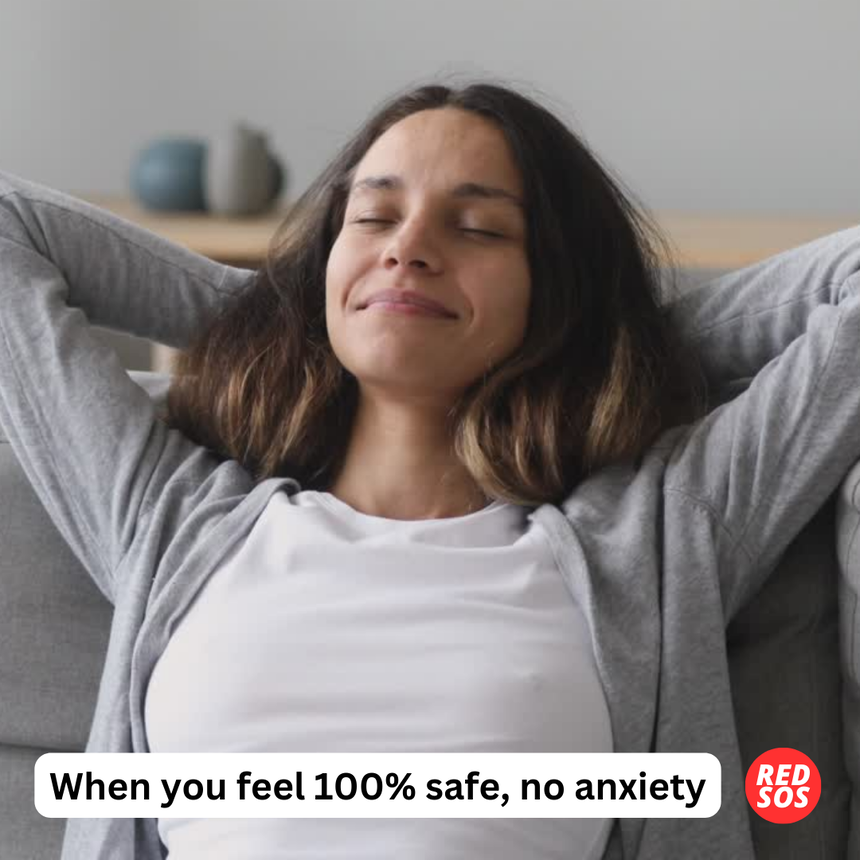|
Safety, an often unheralded protagonist in the theater of human happiness, commands a pivotal role. As a species wired for survival, the need for safety is not merely a preference but a fundamental requirement, etched deep into our psychological blueprint. In exploring the intricate dance between safety and happiness, we discover an immutable truth: without feeling safe, the melody of happiness cannot truly resonate within us.
The Foundational Layers of Safety Abraham Maslow, in his heralded hierarchy of needs, posits safety as the scaffolding upon which higher levels of human experience are constructed. Beyond the physiological needs for food, water, and rest, safety forms the bedrock for psychological well-being. This safety encompasses not only physical security from harm but also extends to financial stability, health and wellness, and emotional well-being. Safety, in its most expansive definition, is the assurance that one can predict their environment sufficiently and exert an adequate level of control over it. The Invisible Sentinel In our daily lives, safety operates often as an invisible sentinel. Its presence is unobtrusive when assured, yet its absence is all-consuming. The sense of safety allows us to focus on tasks, to form relationships, and to pursue ambitions. It is the serene pond on which the lotus of happiness floats. Devoid of this security, our attention invariably pivots to the instability and uncertainties that besiege us, leaving little room for the cultivation of joy. Emotional Safety: The Emotional Undercurrent The importance of emotional safety is especially potent in its influence on happiness. The human heart yearns for connections – relationships where we can be vulnerable, express our true selves, and still feel protected. Emotional safety in our interactions breeds trust, intimacy, and ultimately, a profound sense of belonging and happiness. Conversely, a dearth of emotional safety seeds doubt and disconnection, leading to an insidious erosion of our joy. The Safe Haven of Predictability Predictability is a subtle yet powerful aspect of safety. Knowing what to expect from our environment provides a psychological safe haven, where the mind is free from the relentless vigilance against potential threats. This constancy is not about monotony but about reliability. Within the comfort of predictability, we have the liberty to dream, to plan, and to relish life, laying the groundwork for a fulfilling existence. Safety in the Masquerade of Modernity In our modern tapestry of life, safety can be elusive, often masquerading in the folds of technological advancements and societal progress. The complexities of the digital age and the pressures of contemporary life can unravel our sense of security, showing that advancement without a grounding in safety can disrupt the very happiness it seeks to elevate. The Harmonious Balance The quest for happiness, therefore, is not merely a pursuit of pleasure but a balance between seeking joy and ensuring safety. One without the other is an incomplete equation. In the absence of safety, happiness becomes a fleeting ghost, ephemeral and elusive. When we secure our safety, we do not merely erect a fortress against harm but also cultivate a fertile soil in which the seeds of happiness can sprout and thrive. In conclusion, the adage "safety first" is not just a cautionary slogan but a profound wisdom for a contented life. Safety is not the antithesis of adventure or the enemy of excitement; it is the harmonizing force that makes such experiences possible. As we navigate the voyage of life, let us prioritize safety with the same vigor with which we chase happiness, knowing that in the secure embrace of safety lies the joyous freedom to truly live and to love. Safety, therefore, is not just a component of happiness—it is the cradle that nurtures it. If you have any personal safety needs, email [email protected] or call 1-877-832-5276. You can also download our app at redsos.com. In our fast-paced world, emergencies can strike at any moment. From natural disasters to unexpected personal crises, the ability to respond quickly and efficiently can mean the difference between safety and peril. But when was the last time you reviewed your personal safety plan? If your immediate response involves uncertainty or an admission of its nonexistence, it’s time to take action. Understanding the Essentials of a Personal Safety Plan A personal safety plan is a structured approach to prepare for unpredictable emergencies. It details proactive steps and necessary responses tailored to individual needs and environments. The question is not if you should have a safety plan, but rather, what your plan covers and how effectively it can be implemented. Evaluating Your Current Plan Begin by examining potential scenarios:
What If 911 is Unavailable? It's a scenario few consider until it's too late. Network outages during major disasters can overload emergency services, rendering them unreachable. Here’s how to prepare:
Non-Verbal Emergency Communication
In situations where you can't speak or breathe properly, traditional phone calls to 911 might not be feasible. Consider these options:
Incorporating technology can significantly enhance your safety preparedness. Apps not only streamline communication in crises but also ensure that help is summoned without needing to speak. This feature is crucial if you're incapacitated or need to remain discreet. Key Elements of an Effective Safety Plan
Among various safety apps, RedSOS offers robust features:
It only takes five minutes to draft a preliminary version of your personal safety plan. Begin with simple steps: compile contact information, download necessary apps like RedSOS, and discuss the plan with your household. Remember, a few minutes today can safeguard your and your loved ones' lives tomorrow. A well-crafted personal safety plan is a testament to proactive living. It’s not just about responding to emergencies; it’s about being prepared for them in ways that enhance your chances for safety and resilience. Start today—peace of mind is a plan away. If you have any personal safety concerns, feel free to call us anytime at 877-832-5276 or download the RedSOS personal safety app. Jogging is a fantastic way to keep fit, clear your mind, and enjoy the outdoors. But when hitting the path alone, safety becomes a priority. Understanding how to protect yourself can transform your run from a risky endeavor to an empowering routine. The Power of Companionship The adage "there's safety in numbers" holds particularly true for joggers. Bringing a friend along when you jog can drastically reduce your risk of being targeted by criminals. The logic is simple yet profound: individuals are less likely to be attacked when they're not alone. This is supported by stark statistics, such as those from carjacking studies from 1995-2021, where 90% of incidents occurred when an individual was alone in their car. The presence of just one additional person reduced the likelihood of such crimes by a staggering margin. Embracing Solo Runs with Caution Of course, syncing schedules isn't always possible, and sometimes, solitude is what you seek in a jog. When you're out alone, your strategy for personal safety needs to be robust and thoughtful. Lightweight Self-Defense Tools A variety of self-defense tools can accompany you on your run, but it's essential to select something that won't weigh you down. Popular options include:
Remember, personal safety is deeply personal. The choice of tool should reflect your comfort level, understanding of the tool's use, and the legalities in your area. Proactive Safety, Not Reactive Combat The primary goal of any self-defense strategy should be to avoid danger, not to confront it. Keeping a safe distance from potential threats reduces the chances of injury. Tools like tasers and pepper spray do provide a means of defense without immediate close contact, but they should be a last resort. Alarms and Apps for Early Warning Implementing personal alarms or safety apps can help you avoid an altercation altogether. If you sense danger, activating an alarm or sending an alert through a safety app can be enough to scare off a potential attacker and draw attention for help. The Close-Contact Dilemma If an encounter escalates and you're forced into close contact, being prepared to use your chosen self-defense tools is crucial. While a study found that 25% of carjackings caused injury to the victim, this underscores the importance of maintaining distance whenever possible. Close contact increases the risk of injury, so it's vital to use physical self-defense tools only when absolutely necessary. Summary: Safeguarding Your Solo Jogs
As always, if you have any questions about personal safety, call us anytime 24/7 at 1-877-832-5276 and we'll be happy to help. You can also download our app for 24/7 emergency protection.
Emergencies can happen at any time, and we often take for granted the ability to dial 911 for immediate help. But what happens when 911 services are down? Outages, while rare, can occur during major disasters, cyber-attacks, or technical failures. In such times, having a predetermined safety plan with your family or roommates is not just wise—it could be lifesaving. Here's how to prepare an effective emergency plan and why incorporating a tool like the RedSOS app can ensure you always have a lifeline.
Developing a Comprehensive Safety Plan: 1. Gather Information: Start by collecting all essential contact information, including local emergency services like the fire department, police station, and hospitals. Also, list contacts for immediate family members, neighbors, and close friends who can be reached during an emergency. 2. Assign Roles: Determine who in your household is responsible for what during various types of emergencies. Who grabs the emergency kit? Who is responsible for contacting emergency services? Who checks on elderly neighbors? Assigning roles ensures that everyone knows their tasks and can act quickly under stress. 3. Plan Evacuation Routes: Identify safe exit routes from your home and establish meeting points outside your house and in the neighborhood. Practice these routes to ensure everyone knows them by heart. 4. Establish Communication Strategies: Decide how you will communicate if local phone services are unavailable. Text messages can often go through when phone calls can't. Have a battery-powered radio handy to receive information if the power is out. 5. Educate Everyone: Every member of the household should be familiar with how to use fire extinguishers, perform basic first aid, and recognize natural gas leaks. Regularly review these skills and hold practice drills. 6. Document and Distribute the Plan: Write everything down, make copies, and ensure every family member or roommate has one. Store it in an easily accessible place and revisit the plan annually or whenever your living situation changes. Why Include RedSOS in Your Emergency Plan In the event of a 911 outage, having an alternative way to call for help is crucial. Redsos is a 24/7 emergency response app that operates independently of 911, using its own communication and location-sharing technology to connect users directly with emergency services. Features of RedSOS:
Taking just five minutes to create a safety plan with those you live with might save your life. In situations where every second counts, having a plan—and a backup means of getting help—can make all the difference. Not only does it reduce panic and confusion, but it also streamlines your response, allowing you to act effectively. A safety plan supported by tools like RedSOS not only enhances your preparedness but also gives you peace of mind knowing that you have contingencies in place. Remember, in an emergency, being prepared is not just about protecting yourself—it's about ensuring the safety and security of all those you care about. Incorporating a reliable emergency app like RedSOS into your plan means you’re never truly alone, even when traditional systems fail. Stay safe, stay prepared, and empower yourself and your loved ones with the knowledge and tools to face emergencies confidently. It’s a question that often goes unasked, lingering quietly in the back of our minds: “Did I feel safe today?” It's an inquiry that cuts to the core of our wellbeing, yet many of us hustle through our days without pausing to reflect on our sense of security. The truth is, the feeling of safety is as vital to our health and happiness as our basic needs for food and water. Understanding Safety as a Basic Need Maslow’s hierarchy of needs places safety just above physiological essentials such as food, water, and shelter. This framework in psychology suggests that before we can reach higher levels of self-fulfillment or creativity, we need to feel secure and protected from harm. It’s a basic human need, yet it’s often the most overlooked—especially in our modern, fast-paced world. The Toll of Insecurity When we don't feel safe, our bodies are in a constant state of alert. The stress hormones pump through our veins, our muscles are tensed for action, and our minds are clouded by potential threats. Over time, this state of hyper-vigilance can lead to chronic stress, impeding our ability to think clearly, make decisions, and be creative. It wears down our mental health, contributing to anxiety and depression, and can even affect our physical health. Achieving a Sense of Security But what happens when we do feel safe? It’s like a weight is lifted off our shoulders. We stop looking over our shoulders, our breaths come easier, and the world seems a little brighter. When safety is assured, our stress levels begin to ebb. We start to feel better, not just mentally, but physically too. Making Safety a Priority So, how do we transition from a state of constant alert to one of peace and security? The first step is acknowledgment—recognizing that your feelings of safety, or lack thereof, are valid and worth addressing. From there, the path to improvement can be as unique as each individual’s experience of the world. For some, enhancing personal safety could mean taking self-defense classes to feel more empowered. For others, it might involve making changes in their environment, such as improving home security, altering routines to avoid unsafe situations, or even relocating to a more secure area if possible. Community and Connection Sometimes, the key to feeling safe lies in our relationships with others. Building a supportive community around us, whether it's with friends, family, or local networks, can provide a sense of security that's both profound and comforting. A Day Without Worry Imagine going a full day without a single worry about your physical safety. It might seem small, but it’s a significant step toward overall wellbeing. This reprieve allows our minds the freedom to roam, to explore new ideas, and to rest. It’s in this space that we can be our most authentic selves, where creativity flourishes, and where peace is not just a concept, but a lived experience. Embracing Wellbeing We often take the feeling of safety for granted, yet it's the very foundation upon which we can build a life full of creativity, joy, and relaxation. So, take the time today to ask yourself, "Did I feel safe?" If not, give yourself permission to make the changes necessary to answer "Yes" tomorrow. In doing so, you are not only acknowledging the importance of your own wellbeing but taking active steps towards achieving it. Safety is a need, not a luxury, and ensuring it is an investment in your quality of life. If you have any personal safety needs, please call us at 1-877-832-5276 or download our app!
In today's fast-paced world, personal safety is a top concern for many individuals. Whether you're walking alone at night or navigating unfamiliar surroundings, having a sense of security is paramount. Fortunately, technology has provided innovative solutions to address these concerns, and one such solution is the RedSOS app.
Among its array of features designed to enhance personal safety, the TEST feature stands out as a groundbreaking tool. Unlike traditional emergency response systems that are activated only in crisis situations, the TEST feature offers a proactive approach to managing personal safety anxiety. With just a tap on your smartphone, users can request a call from a professional agent at any time, 24/7, even if there's no imminent danger. The beauty of the TEST feature lies in its versatility. While it's invaluable during emergencies, its benefits extend far beyond crisis situations. For individuals experiencing heightened anxiety or feeling vulnerable, simply knowing that a professional is just a phone call away can provide immense reassurance. Whether you're walking alone in a deserted area or facing a challenging situation, having someone to talk to can make all the difference. Research has shown that feelings of isolation and fear are major contributors to personal safety anxiety. By offering a lifeline for users to connect with a trained agent, the TEST feature effectively addresses these concerns. The mere presence of a supportive voice on the other end of the line can alleviate anxiety and instill a sense of companionship, making individuals feel less alone and more empowered to navigate their surroundings safely. Moreover, the TEST feature fosters a proactive mindset towards personal safety. Rather than waiting for emergencies to occur, users can take preemptive measures to manage their anxiety and mitigate potential risks. This proactive approach not only enhances individual safety but also promotes overall well-being and peace of mind. The impact of the TEST feature on personal safety anxiety cannot be overstated. By leveraging technology to provide on-demand support, RedSOS empowers users to take control of their safety in a way that's convenient, accessible, and effective. Whether you're a frequent traveler, a night shift worker, or simply someone who values peace of mind, the TEST feature offers a valuable resource for enhancing personal safety and well-being. In conclusion, the RedSOS app's TEST feature represents a paradigm shift in personal safety management. By offering professional support at the touch of a button, it transforms anxiety into empowerment, fear into confidence, and isolation into connection. In an unpredictable world, having a lifeline you can trust is priceless, and the TEST feature delivers just that. |
HelloWelcome to our blog. Popular Articles
How to Overcome Anxiety about your Safety How to Stay Safe while Jogging - 3 Smart Strategies for Solo Runs What to Do When 911 Is Down: Creating a Safety Plan That Could Save Your Life 3 Simple Ways to Maximize your Personal Safety when walking your dog RedSOS App's TEST Feature: A Lifeline for Personal Safety and Peace of Mind The Crucial Link Between Personal Safety and Well-Being: Insights from Maslow's Hierarchy Gifting Personal Safety and Self-Defense: The Gift of Empowerment Archives
April 2024
Categories |
|
RedSOS is a personal safety application that operates using cellular or WiFi data. Results not guaranteed. RedSOS is not guaranteed to help in an emergency.
|
All Rights Reserved © 2024 RedSOS.com
|







 RSS Feed
RSS Feed